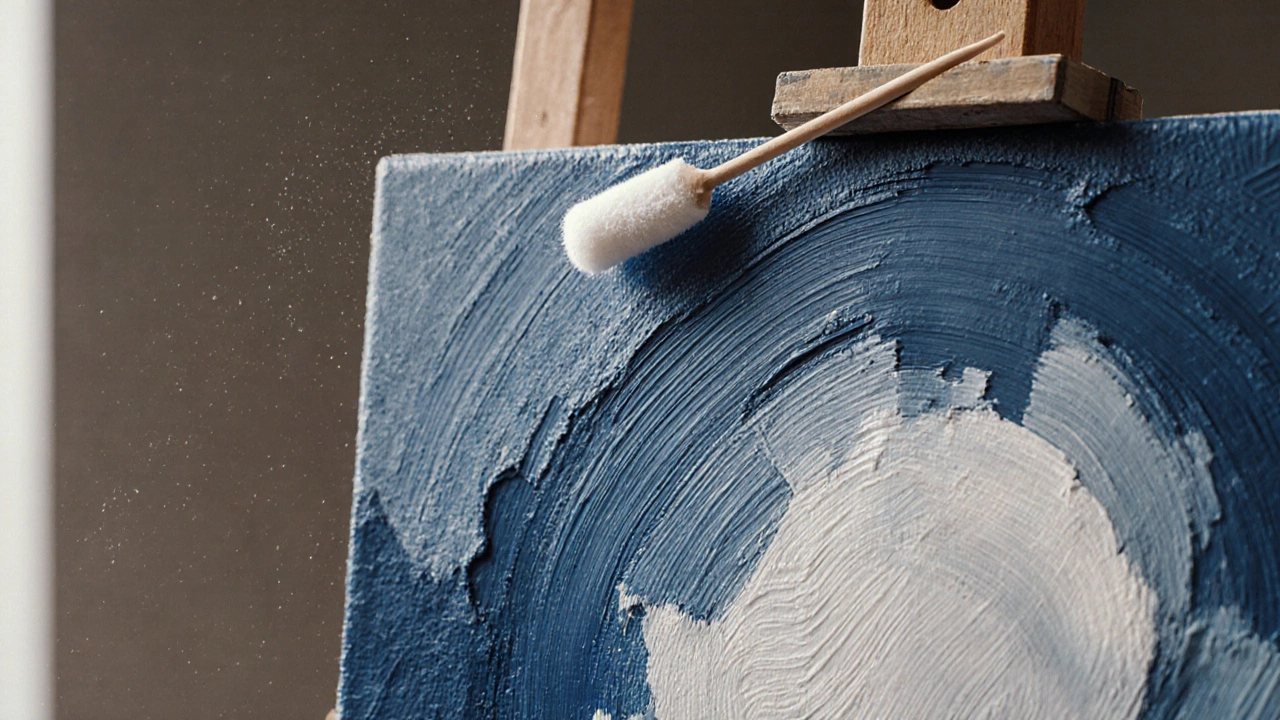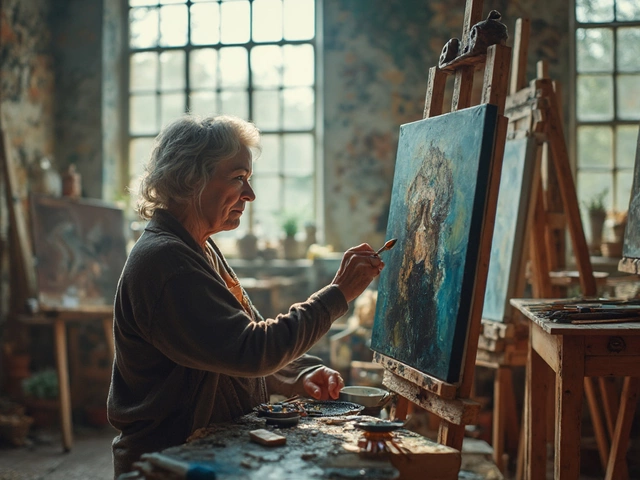Varnish Oil Painting: Protect and Enhance Your Art with the Right Finish
When you finish an oil painting, a painted artwork made with pigments suspended in drying oil, usually linseed oil. Also known as oil-on-canvas, it requires time to dry fully before you can safely apply a protective layer called varnish, a clear, protective coating used to seal and unify the surface of finished paintings. Without it, your painting is vulnerable to dust, UV damage, and yellowing over time.
Not all varnishes are the same. There’s gloss varnish, a high-shine finish that deepens colors and gives a wet-look effect, perfect if you want your blues and reds to pop. Then there’s matte varnish, a flat, non-reflective finish that reduces glare and softens tones, often preferred for contemporary or subdued works. And don’t forget satiny varnish, a middle ground between gloss and matte, offering subtle sheen without overpowering. The choice affects how viewers experience your piece—not just visually, but emotionally.
Timing matters too. Most artists wait at least six months before varnishing, sometimes up to a year, to make sure the oil has fully cured. Applying it too early can trap solvents underneath, causing cloudiness or cracking. You’ll also need the right tools: a wide, soft brush, a clean workspace, and patience. No rushing. No thick layers. One thin, even coat is better than two heavy ones. And always test on a small area first—some pigments react badly to certain varnishes.
Why bother? Because varnish isn’t just protection—it’s restoration. Over decades, dirt and smoke settle into the paint’s surface. A removable varnish lets future conservators clean the grime without touching the original paint. That’s why professional artists and museums use reversible varnishes like dammar or synthetic alternatives. It’s not about making your art look shiny today—it’s about keeping it alive for generations.
You’ll find plenty of advice online about using spray varnish, brushing techniques, or even skipping varnish altogether. But the real question isn’t whether you can skip it—it’s whether you want your work to last. The posts below show exactly how artists handle this step: from choosing the right product, to fixing cloudy varnish, to applying it over mixed media. Whether you’re a beginner finishing your first landscape or a seasoned painter preparing for a show, these real-world guides cut through the noise and give you what actually works.
Should I Seal My Oil Painting? A Practical Guide to Varnishing for Long-Lasting Color
Learn when and how to properly varnish your oil painting to protect colors, prevent yellowing, and ensure it lasts decades. Avoid common mistakes and choose the right varnish for long-term preservation.
Continue Reading




